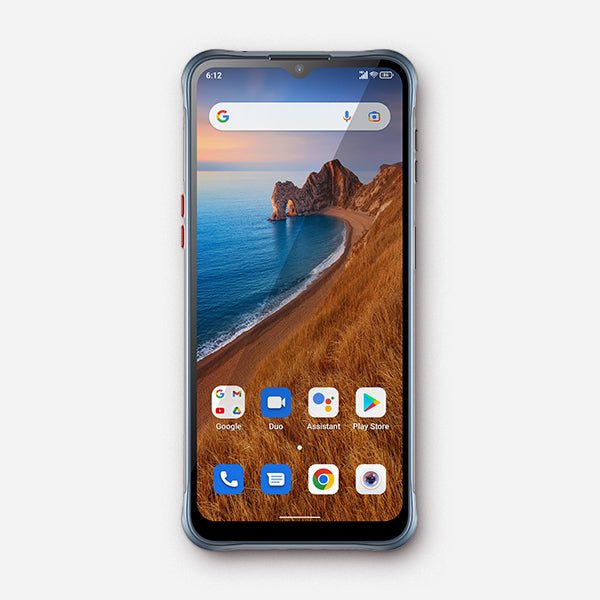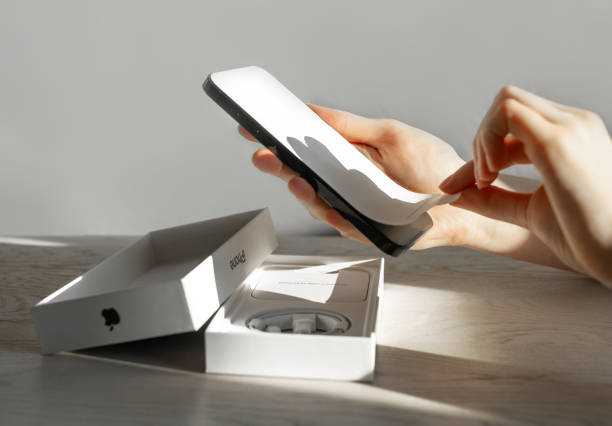
Beyond the App Store: The Ultimate Guide to Android for Business and Enterprise
When you hear the word “Android,” your mind likely jumps to the latest Samsung Galaxy or Google Pixel, the vastness of the Google Play Store, and the operating system that powers billions of personal devices worldwide. But beneath this consumer-facing surface lies a powerful, secure, and incredibly versatile ecosystem built for the modern enterprise. For years, Android has been quietly shedding its “consumer-only” reputation, evolving into a robust platform that businesses of all sizes are leveraging for everything from secure corporate communications to rugged, single-purpose logistics tools. This isn’t just about giving employees a work phone; it’s about transforming how work gets done.
This article moves beyond the typical technical jargon and backend configurations. Instead, we’ll explore the strategic business advantages of the Android ecosystem. We will delve into the world of enterprise-grade Android Phones, specialized Android Gadgets, and the latest Android News shaping the corporate landscape. We’ll uncover how features like Work Profiles respect employee privacy on personal devices, how Zero-Touch Enrollment can deploy hundreds of devices without IT intervention, and why the Android Enterprise Recommended program is a game-changer for hardware selection. Whether you’re a small business owner considering a BYOD policy or an IT director managing a global fleet of devices, this guide will provide actionable insights into harnessing Android’s full enterprise potential.
The Foundation: Understanding Android’s Enterprise Framework
At the heart of Android’s business capabilities is the Android Enterprise framework, a set of APIs and tools that allow companies to manage devices, apps, and data securely and efficiently. This isn’t a single product but a flexible foundation that supports various deployment models, ensuring businesses can tailor the solution to their specific needs. Understanding these core models is the first step in building a successful mobile strategy.
Work Profile: The Key to Secure BYOD (Bring Your Own Device)
The most common scenario in today’s flexible work environment is employees using their personal phones for work. This creates a significant security and privacy challenge. The Work Profile is Google’s elegant solution. It creates a dedicated, encrypted container on an employee’s personal device that isolates work apps and data from personal ones. Think of it as a secure “work phone” living inside a personal phone.
- For the Business: IT has full control over the work container. They can enforce password policies, remotely wipe only the work data if a device is lost or an employee leaves, and deploy approved corporate apps from a managed Google Play Store. This prevents sensitive company data from leaking into personal apps or cloud storage.
- For the Employee: Privacy is paramount. The company has zero visibility or control over the personal side of the device. They cannot see personal photos, track location (outside of work profile policies), or wipe personal data. This separation is critical for employee trust and adoption of BYOD policies.
Fully Managed Devices: Total Corporate Control
For company-owned devices (COPE – Corporately Owned, Personally Enabled, or COBO – Corporately Owned, Business Only), a fully managed approach provides the highest level of control. In this model, the entire device is managed by the organization. IT controls everything from the wallpaper and OS updates to which apps can be installed. This is ideal for roles that handle highly sensitive information or where the device serves as a primary work tool. Recent Android News often highlights enhancements to this model, offering even more granular controls for IT administrators with each new OS version.
Dedicated Devices (Kiosk Mode): Purpose-Built Android Gadgets

Beyond office work, Android excels in powering single-purpose devices. Think of a tablet at a restaurant for taking orders, a scanner in a warehouse for inventory management, or a kiosk in a hotel lobby for guest check-in. The “Dedicated Device” mode locks an Android Gadget down to a single app or a limited set of apps. This prevents users from browsing the web, changing settings, or using the device for anything other than its intended function. This turns a standard Android tablet or phone into a highly specialized and reliable business tool, often at a fraction of the cost of proprietary hardware.
Choosing Your Arsenal: The World of Enterprise-Ready Android Phones and Gadgets
One of Android’s greatest strengths is its unparalleled hardware diversity. This choice, however, can also be a challenge. Not all Android Phones are created equal when it comes to enterprise readiness. To address this, Google established the Android Enterprise Recommended (AER) program, a critical benchmark for any business investing in mobile hardware.
Why the Android Enterprise Recommended Program Matters
The AER program is a Google-led initiative that validates devices and service providers against strict enterprise-grade requirements. When you choose an AER-certified device, you are guaranteed:
- Timely Security Updates: Devices must receive security patches within 90 days of Google’s release for a minimum of three to five years, depending on the device’s ruggedness rating. This is non-negotiable for protecting corporate data.
- Consistent OS Updates: Certified devices are guaranteed to receive at least one major OS upgrade, ensuring they stay current with the latest features and security protocols.
- Zero-Touch Enrollment Support: All AER devices must support this seamless deployment method, which is a massive time-saver for IT departments.
- Consistent Performance: The devices are tested to ensure they provide a smooth, reliable user experience without excessive pre-loaded bloatware.
Leading manufacturers like Samsung, Google (with its Pixel line), and Nokia have a wide range of AER devices. This program takes the guesswork out of hardware procurement, ensuring you’re investing in a device that is built and supported for business use.
The Right Tool for the Job: From the Boardroom to the Warehouse
The beauty of the Android ecosystem is the ability to match the hardware to the specific job function. A one-size-fits-all approach is rarely effective.
- For Knowledge Workers & Executives: A premium device like the Google Pixel 8 Pro or Samsung Galaxy S24 Ultra is ideal. These devices offer top-tier performance, excellent cameras for video conferencing, and robust security features like Samsung Knox, all while being AER certified. They are perfect for a BYOD or COPE deployment using the Work Profile.
- For Field Service & Frontline Workers: Durability is key. Devices like the Samsung Galaxy XCover series or ruggedized tablets from Zebra Technologies are built to withstand drops, dust, and water. They often feature programmable buttons for push-to-talk functionality, swappable batteries for all-day use, and barcode scanners, making them powerful Android Gadgets for logistics, retail, and healthcare.
- For Point-of-Sale & Kiosks: Here, a cost-effective Android tablet from manufacturers like Lenovo can be locked into Dedicated Device mode. It provides a large, interactive display for customer engagement or employee tasks without the expense of specialized, proprietary systems.
Deployment and Management at Scale: From Zero-Touch to Total Control
Purchasing the right hardware is only half the battle. The real challenge for many businesses is deploying and managing these devices efficiently, especially when dealing with hundreds or thousands of units across different locations. This is where Android’s modern management features truly shine, turning a potential logistical nightmare into a streamlined, automated process.
Zero-Touch Enrollment: The “Magic” of Out-of-the-Box Setup

Imagine this scenario: you order 200 new Android Phones for your sales team. Instead of shipping them to your IT department for manual setup, they are shipped directly to your employees’ homes. The employee unboxes the phone, connects it to Wi-Fi, and the device automatically configures itself with all the necessary work apps, security policies, and email settings. This is Zero-Touch Enrollment.
By working with a Zero-Touch reseller, devices are pre-registered to your organization’s management console before they even ship. The moment the device is turned on for the first time, it checks in with Google’s servers, recognizes it belongs to your company, and automatically begins the provisioning process. This eliminates the need for IT to physically touch every device, saving countless hours and ensuring a consistent, secure setup for every user. It is one of the most impactful features for any business deploying devices at scale.
The Role of Unified Endpoint Management (UEM)
Android provides the framework, but a Unified Endpoint Management (UEM) platform—formerly known as Mobile Device Management (MDM)—is the command center. This is the software that IT administrators use to execute their mobile strategy. Popular UEM solutions include Microsoft Intune, VMware Workspace ONE, and SOTI MobiControl.
Through a UEM console, an administrator can:
- Push Applications: Silently install, update, and remove work apps from the managed Google Play Store without user interaction.
- Enforce Security Policies: Mandate screen lock complexity, encrypt device storage, configure VPN settings, and block data sharing between work and personal profiles.
- Monitor Compliance: Generate reports to see which devices are out of compliance (e.g., running an old OS version) and take automated action, such as restricting access to corporate resources until the issue is resolved.
- Remotely Troubleshoot: In some cases, IT can remotely view and control a device screen (with user permission) to help solve technical issues for field workers.
Choosing the right UEM is as important as choosing the right device. It’s the engine that drives your entire mobile management and security strategy.
Best Practices and Actionable Recommendations
Successfully integrating Android into your business goes beyond technology. It requires a strategic approach that balances security, usability, and cost. Here are some practical recommendations and common pitfalls to avoid.
Pros and Cons of Different Deployment Models
- BYOD (Work Profile):
- Pros: Lower hardware costs as employees use their own devices. High employee satisfaction as they can use a familiar device.
- Cons: Less control over the physical device and OS updates. Potential support challenges due to hardware fragmentation.
- COPE (Fully Managed with a work profile):
- Pros: A great balance. The company owns and controls the asset, ensuring timely updates and security, while the work profile still provides a clear separation for personal use.
- Cons: Higher initial hardware cost compared to BYOD.
- COBO (Fully Managed, Business Only):
- Pros: Maximum security and control. Ideal for specific roles or regulated industries.
- Cons: Can be restrictive for employees, who may end up carrying a second personal phone.
Tips for a Successful Rollout
- Create a Clear Mobile Use Policy: Before deploying a single device, document everything. What is the device to be used for? What are the expectations for security? What happens if a device is lost or stolen? This policy should be clearly communicated to all employees.
- Prioritize User Communication and Training: The launch of a new mobile solution can be disruptive. Explain to users *why* these changes are being made (e.g., to better protect company and client data). Provide simple training on how the Work Profile functions and who to contact for support. A smooth user experience is key to adoption.
- Start with a Pilot Program: Don’t roll out to 1,000 users on day one. Start with a small, tech-savvy group to identify any issues with your UEM configuration, app deployments, or policy settings. Gather feedback and refine the process before a company-wide launch.
- Lean on the Android Enterprise Recommended Program: When purchasing new hardware, make AER certification a mandatory requirement. This simple step eliminates a huge number of potential long-term support and security headaches. The latest Android News on enterprise features often ties directly back to capabilities guaranteed by this program.
Conclusion: Android as a Strategic Business Asset
The narrative around Android has fundamentally shifted. It is no longer just a consumer operating system but a mature, secure, and incredibly flexible enterprise platform. From the privacy-preserving Work Profile that empowers BYOD to the rugged Android Gadgets locked into kiosk mode on a factory floor, the ecosystem offers a tailored solution for nearly every business need. The key to unlocking this potential lies in a strategic approach—understanding the different management models, choosing the right hardware through programs like Android Enterprise Recommended, and leveraging powerful tools like Zero-Touch Enrollment.
By moving past outdated perceptions and embracing the robust framework Google has built, businesses can enhance productivity, strengthen security, and empower their workforce with the best tools for the job. The modern enterprise runs on mobile, and with its vast ecosystem of powerful Android Phones and sophisticated management capabilities, Android is ready to lead the charge.



